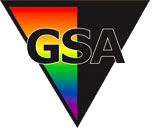
As a bisexual girl, I like to think I’ve got the best of both worlds. I am very happy with my philosophy that people love people, regardless of gender. The way I see it, some people have a “type.” You know, brown hair, nice teeth, sense of humor, love of video games… in my totally unscientific and unsupported-by-any-evidence-
I’ve been told that I have an unfair advantage as a bisexual. I can pass as a heterosexual when it’s convenient and theoretically avoid the discrimination faced by the LGBT community as a whole. On the other hand, I can fit in with the LGBT crowd and fully immerse myself in the culture. Unfortunately, the fact that I can float freely between the dichotomous categories of “gay” and “straight” means that I face animosity and even discrimination from both sides of the fence.
Bisexuals, like the rest of the LGBT community, undergo a “coming out” process. From some heterosexuals, I face the typical “liking girls is wrong/gross” attitude, and I can legally be denied housing and visitation and adoption in the state of Florida should I end up with a woman in the long run. From both the heterosexual and homosexual demographics, a new slew of unique criticisms arise:
- One of my personal favorites is the opinion that bisexuality doesn’t exist—that someone has to “pick a side.” I can either be “with” the LGBT community and fight for equality as a minority in our heterosexual society, or I can be a part of the straight community and exist as an ally, but never quite be a part of the “in” group.
- I also enjoy being told that I only claim bisexuality for the attention; apparently, I’m really only attracted to guys, but guys think lesbians are hot, so I make out with girls to get guys to like me. Right. I’ve been attracted to both sexes pretty much equally since the age of six. I seriously doubt I had this particular ulterior motive in the first grade.
- This one’s more of a myth than an act of discrimination, but it still needs to be cleared up: being bisexual does not mean that I desire being with someone of each sex at the same time. A person can quite easily be bisexual and monogamous. Bisexuality determines attraction, not the difference between faithfulness and polygamy.
Alfred Kinsey developed a scale from 0 (exclusively heterosexual) to 6 (exclusively homosexual) to determine subjectively but significantly where the human population lies in terms of sexual attraction. This Heterosexual-Homosexual Rating Scale (or Kinsey Scale, as it is popularly known) helped Kinsey and his research colleagues to determine that very, very few people may accurately claim to be completely at one end of the spectrum or the other. In his Sexual Behavior of the Human Female (1953), Kinsey states:
“It is a characteristic of the human mind that tries to dichotomize in its classification of phenomena….Sexual behavior is either normal or abnormal, socially acceptable or unacceptable, heterosexual or homosexual; and many persons do not want to believe that there are gradations in these matters from one to the other extreme.”
(Click here for more information about Kinsey!)
So, yeah. I’m bisexual. I exist. I don’t do it for the attention. I’m cool with monogamous relationships. For me, my sexual orientation really is a simple concept, and I never think I have to “choose” between men and women, or being straight or gay. Call me greedy if you like, but sometimes it feels like it’s too much to ask for if I request both my rights and some respect. Regardless, I think we’re moving in the right direction toward both equality and understanding, and hopefully my little rant has helped to broaden some horizons when it comes to the enigma that is bisexuality.
For more information on the history of bisexuality and the struggles of the bisexual community, here are some references I dug up for my Sex Roles from Anthropological Perspective course:
D’Augelli, A.R. & Patterson, C.J. (1995) Lesbian, Gay, and Bisexual Identities Over the Lifespan. New York: Oxford University Press.
Fraser, M. (1999). Identity Without Selfhood : Simone de Beauvoir & Bisexuality. New York: Cambridge University Press.
Reumann, M. (2005). American Sexual Character: Sex, Gender, and National Identity in the Kinsey Reports. Berkeley: University of California Press.
Rust, P.C. (2002). Bisexuality and the Challenge to Lesbian Politics. New York: New York University Press.
Storr, M. (1999). Bisexuality: a Critical Reader. London: Routledge.
Weinberg, M.S., Williams, C.J., & Pryor, D.W. (1995). Dual Attraction : Understanding Bisexuality. New York: Oxford University Press.

it's jealousy... i know i'm jealous. nice blog =)
ReplyDeleteHey! What an extremely well-written article - I'm impressed.
ReplyDelete